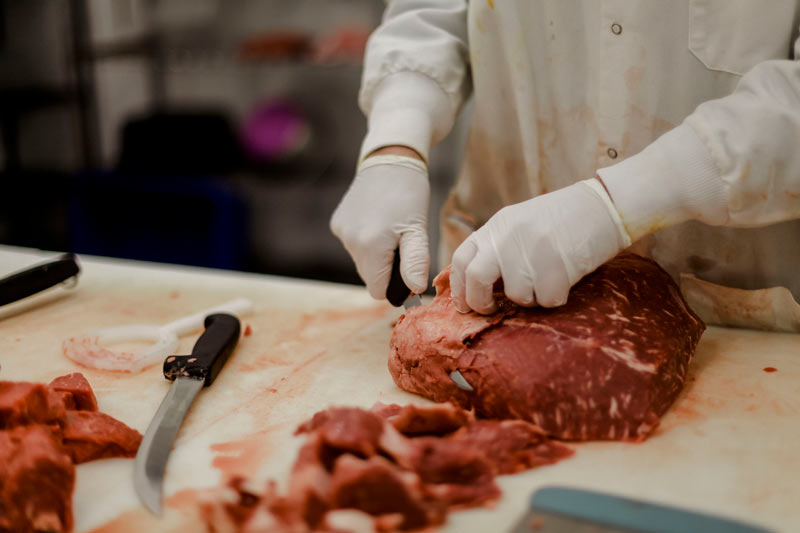Just How to Select the Perfect Cut of Meat From a Trusted Meat Market
Choosing the ideal cut of meat from a trusted meat market needs a thoughtful method that balances top quality, cooking purpose, and spending plan. Recognizing the various kinds of meat and their corresponding cuts is necessary, as is engaging with your butcher to get understandings into sourcing and prep work. Observing features such as shade, structure, and marbling can additionally guide your choice. As you take into consideration these factors, it ends up being clear that the nuances of your selection could significantly affect the end result of your dish, motivating a deeper exploration of the criteria that absolutely issue.
Recognizing Meat Cuts


For circumstances, the tenderloin is valued for its buttery structure and minimal connective tissue, making it optimal for fast cooking approaches such as barbecuing or pan-searing. In contrast, harder cuts like the brisket or shank gain from slow-moving food preparation techniques to break down collagen, generating rich and delicious results.
Furthermore, the fat web content of a cut plays an important function in flavor profile and moisture retention throughout cooking. Cuts with higher fat web content, such as ribeye, supply a more robust taste, while leaner choices, like sirloin, may need careful preparation to prevent dry skin (bagley meat market edwardsville il). Comprehending these nuances permits for informed choices that boost culinary creations, making sure that each recipe showcases the most effective high qualities of the selected meat
Aspects to Take Into Consideration
When picking the excellent cut of meat, numerous important factors enter into play that can substantially impact the final recipe. Take into consideration the kind of meat you prefer-- beef, pork, lamb, or chicken-- as each offers distinct flavors and structures. The details cut within that group is equally vital; as an example, ribeye supplies rich marbling, while tenderloin provides a lean, buttery texture.
An additional aspect is the cooking technique you prepare to utilize. Cuts appropriate for grilling, such as T-bones or sirloins, differ from those far better suited for sluggish food preparation, like chuck roasts or shanks. Additionally, quality is critical; constantly pick meat with a lively shade and firm texture, signaling high quality and correct handling.
In addition, consider the source of the meat. A trusted meat market frequently supplies in your area sourced, hormone-free, and grass-fed alternatives, which can boost flavor and dietary worth. Last but not least, your budget plan will guide your choice. Premium cuts might supply remarkable preference, but there are likewise cost-effective alternatives that, when prepared properly, can produce tasty outcomes. Balancing these aspects will certainly aid you select the best cut for your culinary demands.
Concerns to Ask Your Butcher
A butcher's know-how can be important when choosing the perfect cut of meat for your culinary endeavors. Start by asking Visit Website regarding the source of the meat.
Next, inquire about the various cuts readily available for the sort of meat you prefer. A well-informed butcher will certainly explain the subtleties of each cut, aiding you select one that matches your cooking approach and preferred outcome. Do not wait to ask concerning the most effective food preparation methods for a details cut; butchers commonly have suggestions that can improve your dish.
It's also prudent to ask about the meat's quality. An excellent butcher will certainly be excited to share their competence and suggest cuts that will certainly thrill your palate. Engaging your butcher with these inquiries can dramatically boost your meat choice experience.
Recognizing Quality Meat

Structure is an additional critical aspect; top quality try this site meat should feel solid and a little bouncy to the touch. Avoid any cuts that feel slimy or excessively dry, as these can suggest spoilage or incorrect storage. Additionally, odor plays an essential role; fresh meat should have a clean, neutral fragrance, while any kind of repulsive or sour smells are warnings.
Last but not least, take into consideration the source. Getting from a respectable meat market, where the meat's origin is understood, can ensure greater top quality standards. By concentrating on these indications-- color, marbling, texture, scent, and source-- you can with confidence pick cuts that will certainly boost your food preparation and dining experience.
Cooking Techniques for Each Cut
Choosing the best food preparation technique is critical for making the most of the flavor and inflammation of each cut of meat. Different cuts have one-of-a-kind features that determine one of the most suitable cooking strategies.
For tender cuts, such as filet mignon or ribeye, dry heat techniques like barbecuing, broiling, or pan-searing are optimal. On the other hand, harder cuts, such as chuck or brisket, benefit from moist heat methods, consisting of braising or slow-moving food preparation.
Pork chops and poultry busts are flexible and can be cooked utilizing both completely dry and wet methods. While barbecuing or roasting can generate delicious outcomes, poaching or sautéing can preserve visit this site dampness and inflammation. For lamb, techniques like roasting or braising are suggested, as they complement the meat's robust taste.

Conclusion
In conclusion, selecting the suitable cut of meat from a respectable meat market requires a thorough understanding of meat cuts and factor to consider of various aspects, including resource, high quality, and food preparation techniques. Engaging with the butcher with targeted questions can generate useful insights and referrals tailored to specific culinary requirements. Focusing on both quality and budget will boost the general gastronomic experience, making certain that the selected cut fulfills expectations in both taste and preparation.